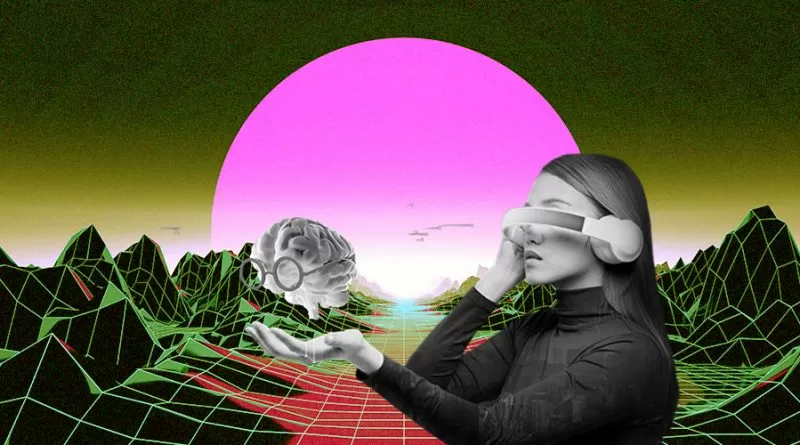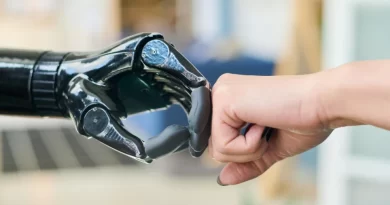Artificial Intelligence: The Biggest Factor Behind Metaverse Growth
The Metaverse’s involvement in AI entails the integration of many technologies such as virtual reality, 3D animation, and blockchain. AI in the Metaverse is one of the most talked-about subjects in technology and socioeconomics. AI is a synthesis of several technologies such as virtual reality, 3D animation, and blockchain. Many businesses are already developing services for the new digital environment. Facebook, the tech behemoth, has adopted Meta. This is a clear indication that Metaverse growth is serious about being the next big technology. While much has been said about blockchain’s function in the Metaverse, much more needs to be said about NFTs and their implications for Metaverse AI.
It is a highly scaled and interoperable persistent, interoperable, networked real-time platform. This platform is made up of interconnected virtual domains in which users can engage, socialize, transact, create, and play. The Metaverse AI will be a long way from Web3. It will be made up of a network of interconnected, decentralized virtual worlds that can be linked with an economy and individuals who can accomplish practically everything in the real world.
AI’s Role in the Metaverse
AI has the potential to play a key role in the future metaverse. This is true not only from a commercial standpoint but also because AI has the potential to make it more inclusive.
User Interfaces with the inclusion
One of the major factors of Metaverse AI’s success is the promise of immersive experiences. This can be a terrific approach for some to increase social contact, but it can also make entry to the future digital world problematic for those with impairments. People with limited digital skills may be excluded from the new social economy. The role of artificial intelligence in the metaverse is vital to ensuring that everyone, regardless of aptitude, has access to the metaverse. These technologies could be useful in this context:
- Image recognition is useful for persons who have visual problems.
- Translation by machine
- Intelligent exoskeletons in an interactive digital world
- Brain-computer interfaces for the most vulnerable (e.g. Cognition)
- Web3 is frequently referred to as the democratized Web2 by Web2. Web3 is frequently referred to as a more democratic version of Web2. This also holds true for economic and societal constraints.
Smart contract enhancements
The Metaverse AI (and its Decentralization Layer) is a revolutionary platform that promises to ease the exchange of digital assets and entitlements between producers and users. It will also secure ownership and disintermediation with large tech businesses. Is this a possibility? Adidas has just released its first NFT. Despite the fact that the buying restriction was two per person, the deal was over in less than a second. A single person could purchase 330 products in a single transaction. This is the internet democracy of the future. Power may shift away from major corporations, but it does not appear that it will return to the people.
Avatar design
Even if no one knows what you identify is in the metaverse, there will be situations – such as metaverse-facilitated conferences – when hiding behind a unique user name and a Salvador Dali mask may not be considered acceptable behavior. In certain circumstances, it will be critical and helpful to be available with one’s real identity as well as an avatar that appears as much like us as possible. AI can also help here, using models that deconstruct our images and reproduce a 3D sign in our image and similarity.
Mapping of Body Movements
If you’ve ever spent time in today’s VR, you’ll notice that the recurring points of interaction aren’t all that great. This abandons the purpose of keeping people in the metaverse for as long as possible or forcing them to sign in as much as possible. One goal is to make VR interactions more reliable, allowing people to run errands as easily as picking up an article or waving a hand. To do this, Artificial Intelligence will evaluate our physical developments, capturing them via various sensors and then transforming them into orders or developments of the avatars.
Lifting your hand for a handshake with someone should be as simple as it is in the real world, with no need to hold any regulator, and opening and closing a virtual board should be simple and quick, with the AI accurately reading all your body moments. In any event, charting body moments will not end there. Artificial intelligence can also duplicate our expression onto the avatars, so that our smile is also the avatar’s smile, moving an ever-increasing number of articulations – glaring, yawning, shock, squinting, and so on – onto our digital twin, to make our translation from the physical to the digital world as simple as possible.
Enliven Digital Occupants in the Metaverse
Because of Artificial Intelligence, these NPCs or individual coworkers will take on a completely new appearance in the metaverse, executing ‘astute’ activities and undeniably more complex jobs. Consider digital aid assisting new users in moving about and exploring the metaverse, detecting faults, and suggesting solutions to correct them (or, sometimes, really getting them in the clear). On the other hand, imagine a digital assistant taking messages while we are in a Metaverse-based meeting and notifying us afterward.
Alternatively, given that this is already happening with many mobile applications, how about we imagine a section of the metaverse where digital avatars serve as companions or even friends, with whom we may converse, share our problems, or participate in romantic relationships. We should not be surprised by this: AI’s ability to create photorealistic human depictions, as well as engage in conversations of specialized profundity, will make enhanced sentiment a more widespread ‘extravagance’ not long from now. That is also possible in the metaverse.




